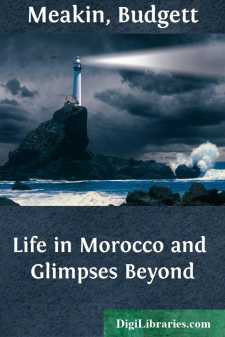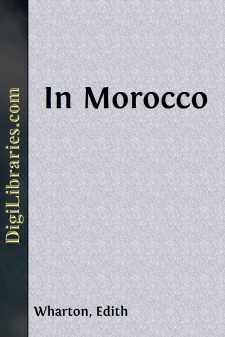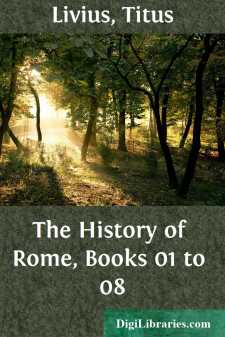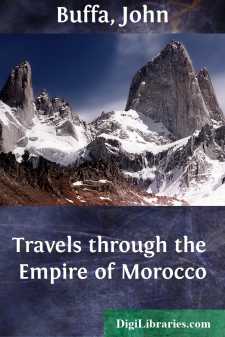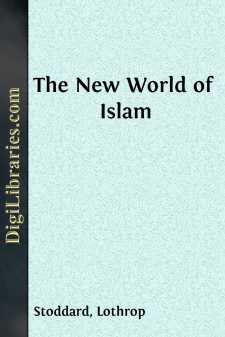Categories
- Antiques & Collectibles 13
- Architecture 36
- Art 48
- Bibles 22
- Biography & Autobiography 813
- Body, Mind & Spirit 142
- Business & Economics 28
- Children's Books 17
- Children's Fiction 14
- Computers 4
- Cooking 94
- Crafts & Hobbies 4
- Drama 346
- Education 46
- Family & Relationships 57
- Fiction 11829
- Games 19
- Gardening 17
- Health & Fitness 34
- History 1377
- House & Home 1
- Humor 147
- Juvenile Fiction 1873
- Juvenile Nonfiction 202
- Language Arts & Disciplines 88
- Law 16
- Literary Collections 686
- Literary Criticism 179
- Mathematics 13
- Medical 41
- Music 40
- Nature 179
- Non-Classifiable 1768
- Performing Arts 7
- Periodicals 1453
- Philosophy 64
- Photography 2
- Poetry 896
- Political Science 203
- Psychology 42
- Reference 154
- Religion 513
- Science 126
- Self-Help 84
- Social Science 81
- Sports & Recreation 34
- Study Aids 3
- Technology & Engineering 59
- Transportation 23
- Travel 463
- True Crime 29
Life in Morocco and Glimpses Beyond
by: Budgett Meakin
Description:
Excerpt
PART I
I
"The firmament turns, and times are changing."
Moorish Proverb.
By the western gate of the Mediterranean, where the narrowed sea has so often tempted invaders, the decrepit Moorish Empire has become itself a bait for those who once feared it. Yet so far Morocco remains untouched, save where a fringe of Europeans on the coast purvey the luxuries from other lands that Moorish tastes demand, and in exchange take produce that would otherwise be hardly worth the raising. Even here the foreign influence is purely superficial, failing to affect the lives of the people; while the towns in which Europeans reside are so few in number that whatever influence they do possess is limited in area. Moreover, Morocco has never known foreign dominion, not even that of the Turks, who have left their impress on the neighbouring Algeria and Tunisia. None but the Arabs have succeeded in obtaining a foothold among its Berbers, and they, restricted to the plains, have long become part of [page 2] the nation. Thus Morocco, of all the North African kingdoms, has always maintained its independence, and in spite of changes all round, continues to live its own picturesque life.
Picturesque it certainly is, with its flowing costumes and primitive homes, both of which vary in style from district to district, but all of which seem as though they must have been unchanged for thousands of years. Without security for life or property, the mountaineers go armed, they dwell in fortresses or walled-in villages, and are at constant war with one another. On the plains, except in the vicinity of towns, the country people group their huts around the fortress of their governor, within which they can shelter themselves and their possessions in time of war. No other permanent erection is to be seen on the plains, unless it be some wayside shrine which has outlived the ruin fallen on the settlement to which it once belonged, and is respected by the conquerors as holy ground. Here and there gaunt ruins rise, vast crumbling walls of concrete which have once been fortresses, lending an air of desolation to the scene, but offering no attraction to historian or antiquary. No one even knows their names, and they contain no monuments. If ever more solid remains are encountered, they are invariably set down as the work of the Romans.
Cavilla, Photo., Tangier.
GATE OF THE SEVEN VIRGINS, SALLI.
Yet Morocco has a history, an interesting history indeed, one linked with ours in many curious ways, as is recorded in scores of little-known volumes. It has a literature amazingly voluminous, but there were days when the relations with other lands were much closer, if less cordial, the days of the crusades and the Barbary pirates, the days of European[page 3] tribute to the Moors, and the days of Christian slavery in Morocco. Constantly appearing brochures in many tongues made Europe of those days acquainted with the horrors of that dreadful land. All these only served to augment the fear in which its people were held, and to deter the victimized nations from taking action which would speedily have put an end to it all, by demonstrating the inherent weakness of the Moorish Empire....


